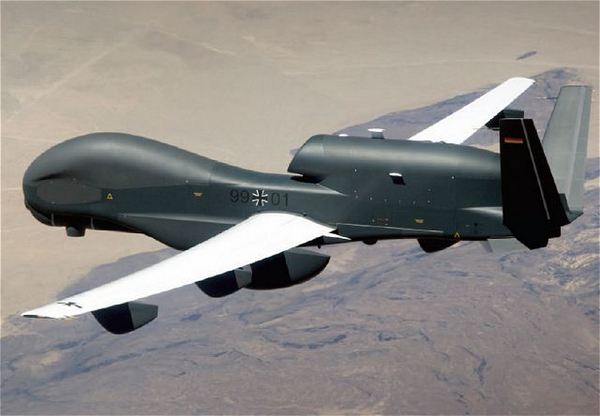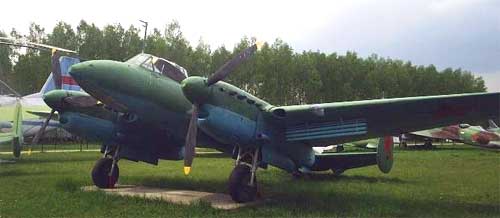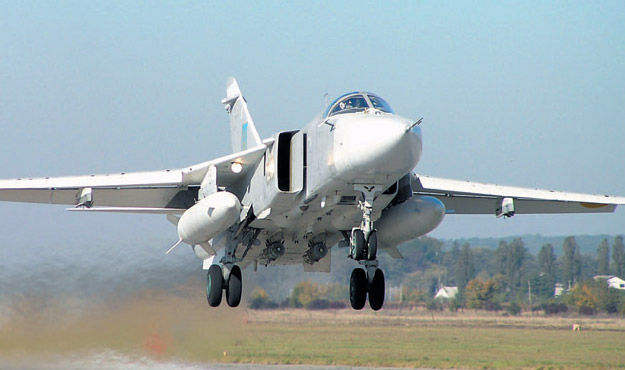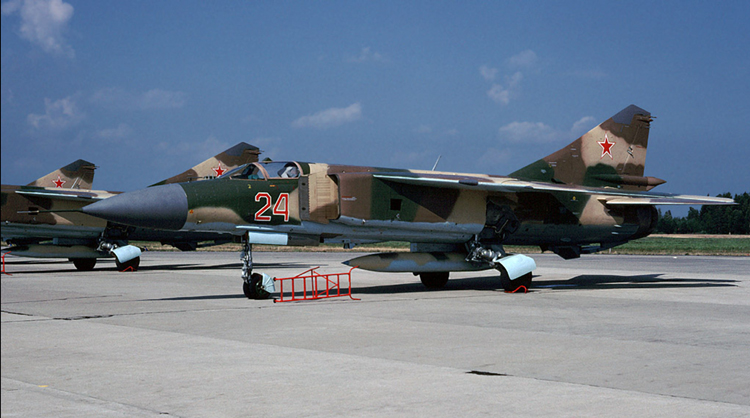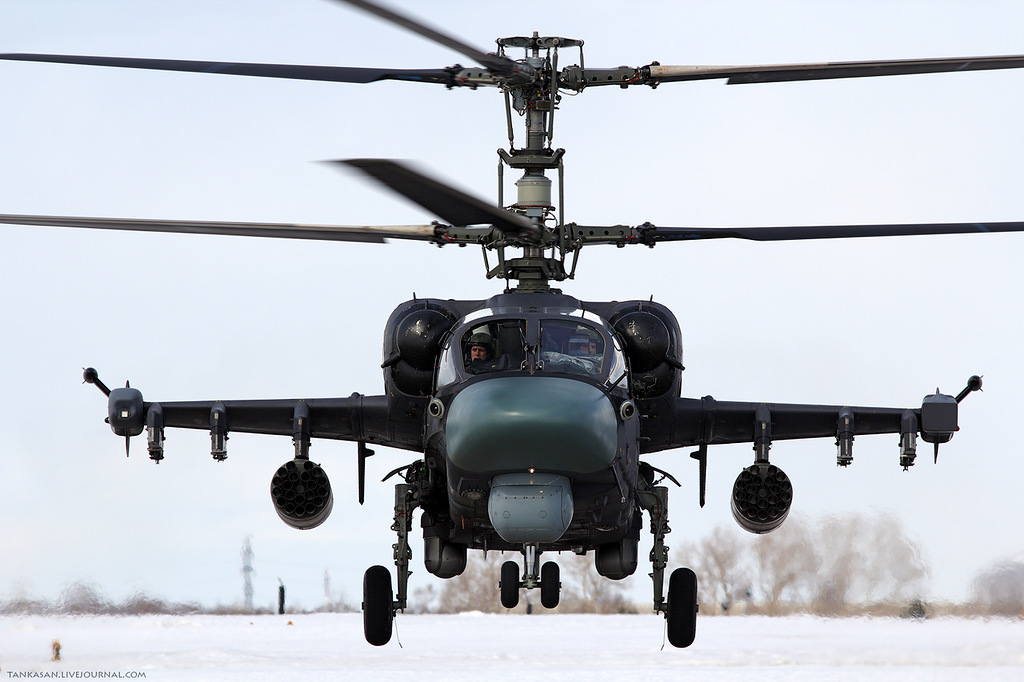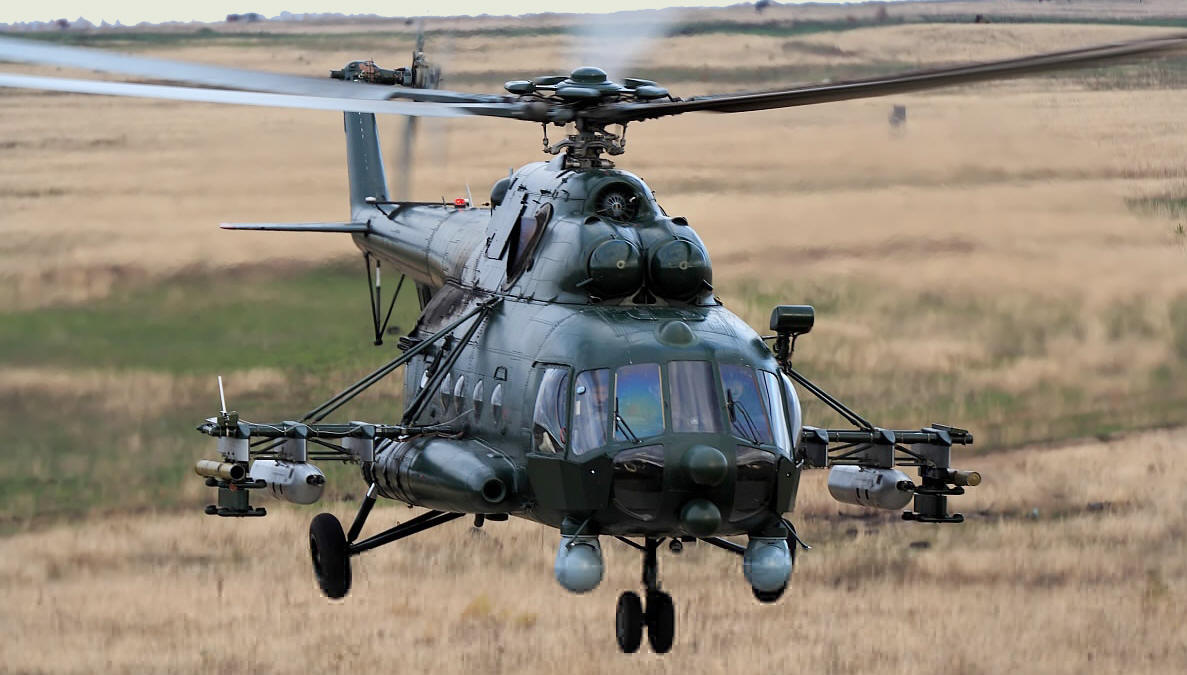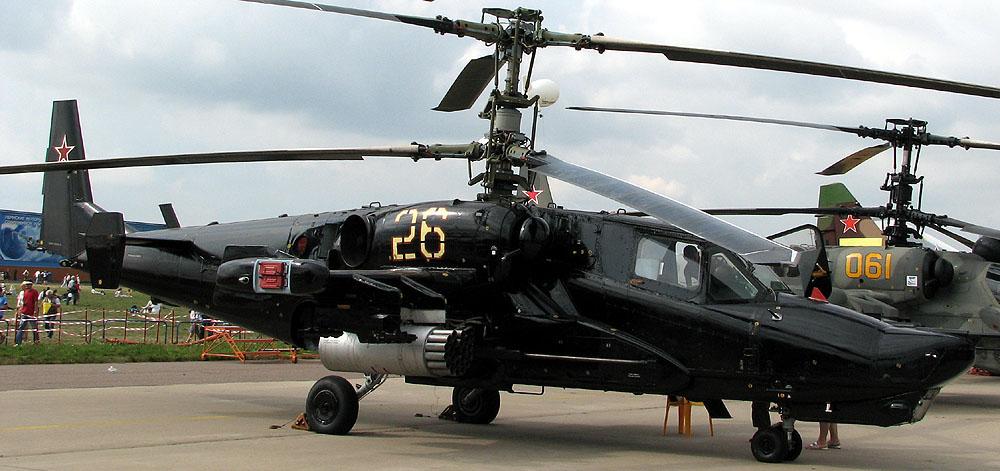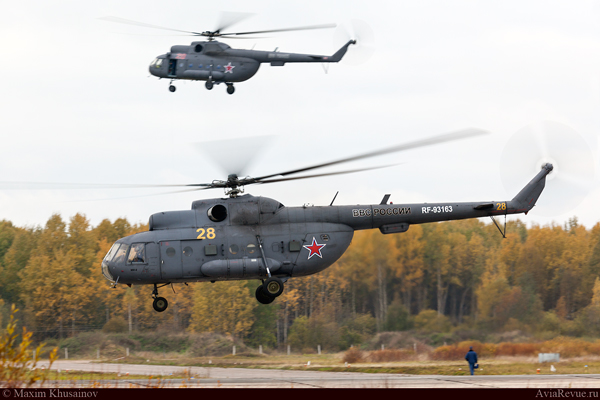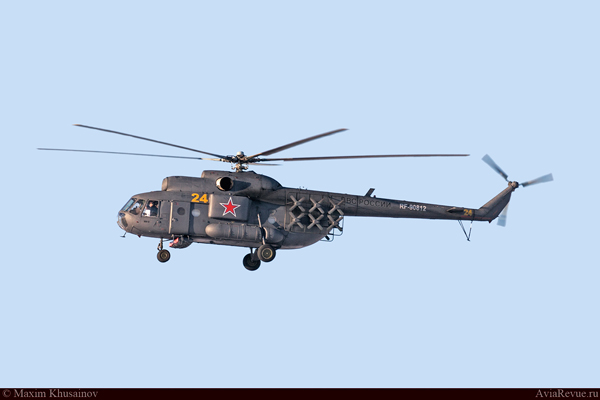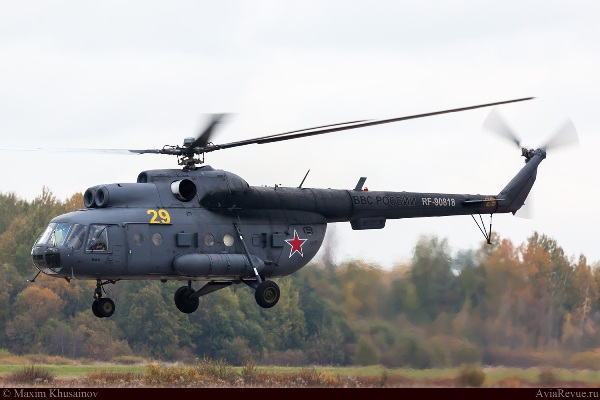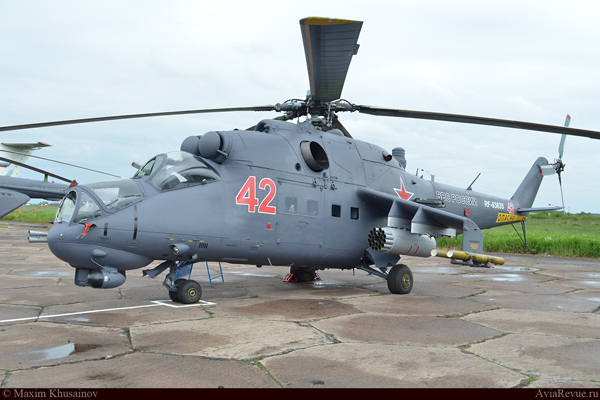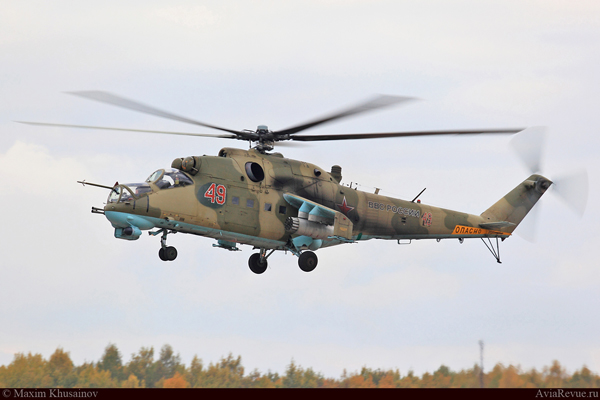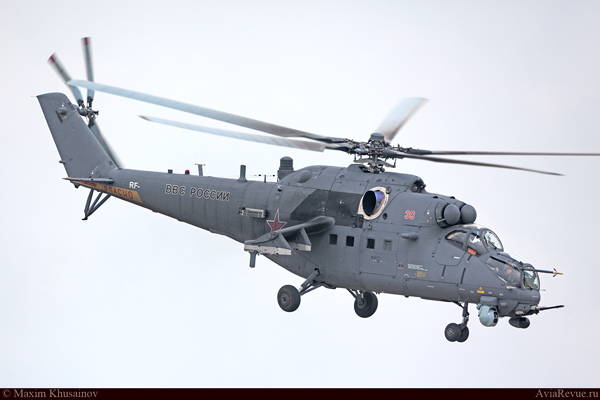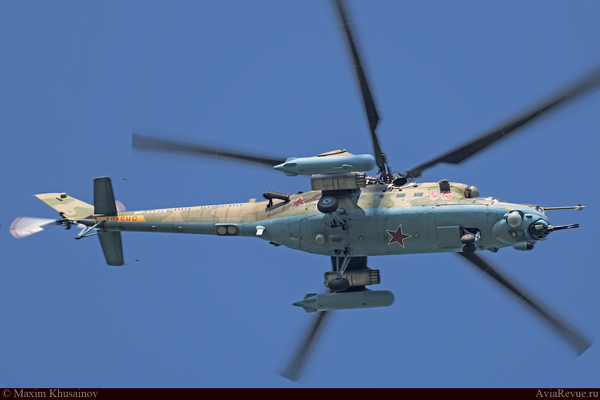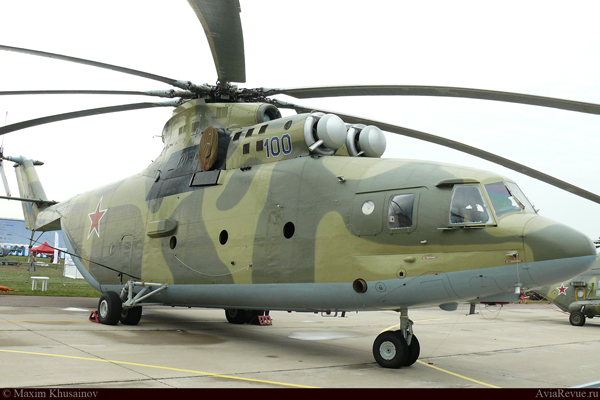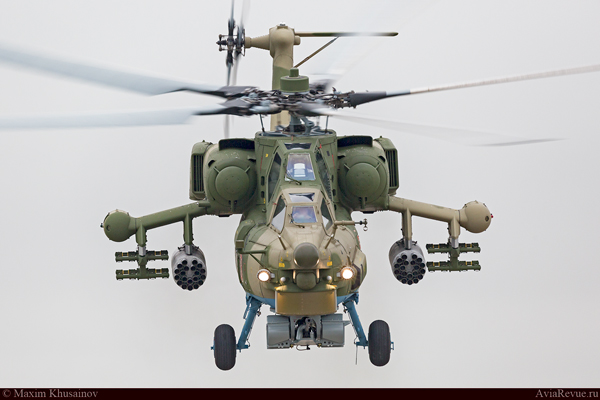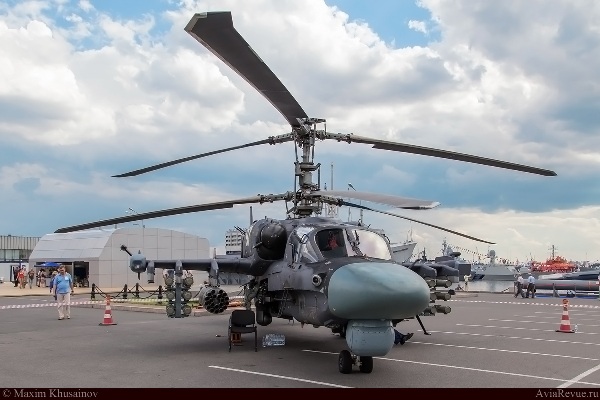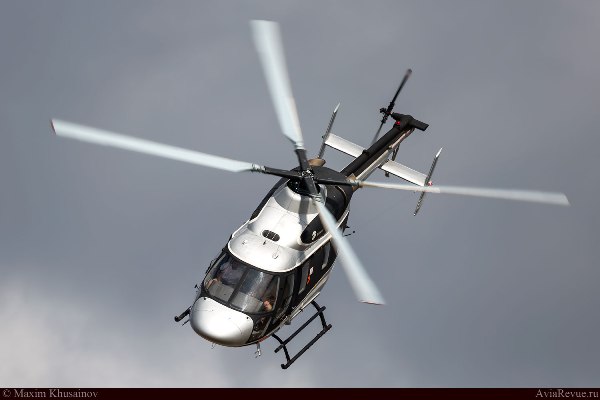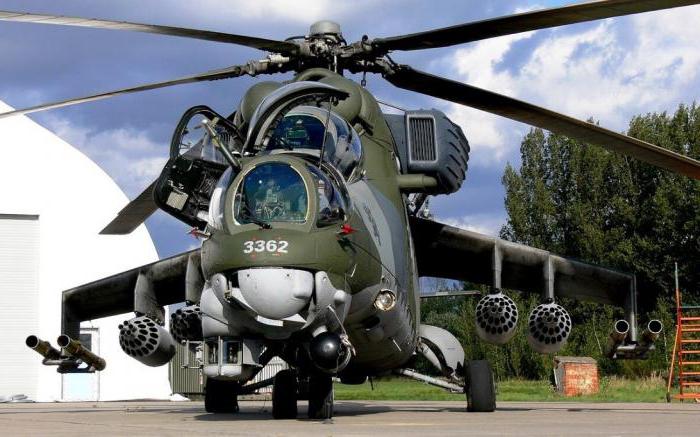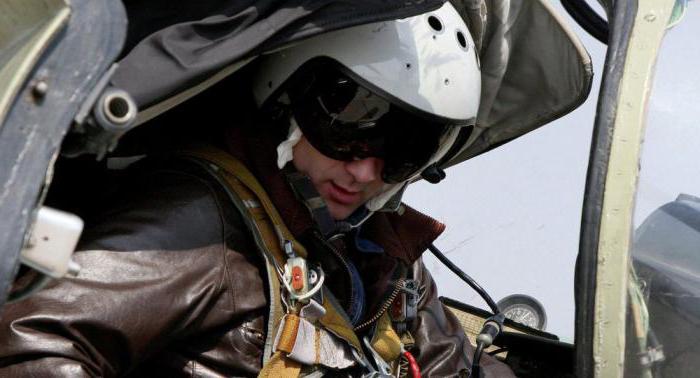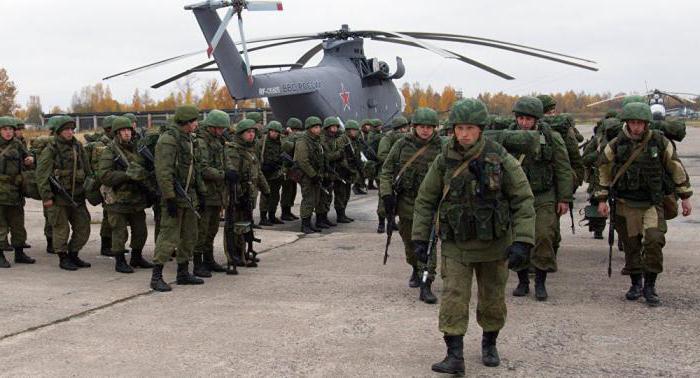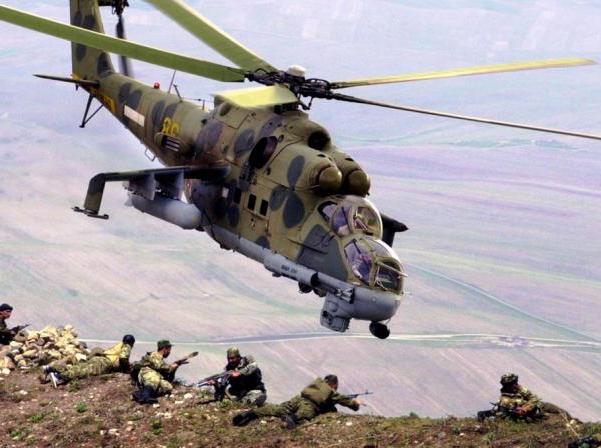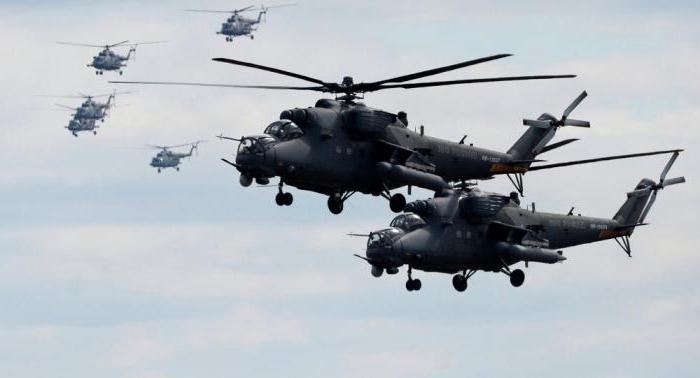Army aviation of Russia: history, comparison with foreign analogues. US Army Aviation. Achievements of other countries
) ground forces (forces), their air support (destruction of enemy manpower and equipment, destruction of its defensive structures), tactical air reconnaissance, provision of tactical air assault landings and fire support for their actions, electronic warfare (EW), minefields, evacuation of the wounded, dead and sick, delivery of materiel and performance of other tasks in operations carried out by the Ground Forces and in cooperation with other services (Air Force, Navy - in coastal areas) and branches of the armed forces. According to the nature of the tasks performed, it is divided into fighter, fighter-bomber (tactical fighters), bomber, assault, transport, reconnaissance and special-purpose aviation (auxiliary). Army aviation consists of aviation branches: fighter, fighter-bomber (tactical fighters), bomber, ground attack, reconnaissance and auxiliary. But the weapons are helicopters, airplanes and unmanned aerial vehicles (UAVs).
History of Army Aviation
It originated before and gained experience in combat use during the years of the 1st World War (-1918). Before the outbreak of World War II, in a number of states it was represented mainly by reconnaissance, fighter and bomber aviation units. In the post-war period, it was widely used in local wars and conflicts, in the 70s of the 20th century it was further developed, it was based on helicopters for various purposes, aircraft and UAVs.
Army Aviation of the Russian Armed Forces
Imperial period
Aeronautics gradually took its place in armed forces. In the second half of the XIX century. balloons were in service. At the end of the century, a separate aeronautical park operated, which was at the disposal of the Commission for aeronautics, pigeon mail and watchtowers. At the maneuvers of 1902-1903 in Krasnoye Selo, Brest and Vilna, methods of using balloons in artillery and for aerial reconnaissance (observation) were tested. Convinced of the expediency of using tethered balls, War Department decided to create special units at the fortresses in Warsaw, Novgorod, Brest, Kovno, Osovets and on Far East, which included 65 balls. The manufacture of airships in Russia began in 1908. At the same time, the Engineering Department was distrustful of the idea of using aviation for military purposes. Only in 1909 did it offer the Training Air and Swimming Park to build 5 airplanes. Then the military department purchased several Wright and Farman aircraft from foreign firms. Meanwhile, several private enterprises for the manufacture of engines and aircraft arose in Russia. Some of them were subsidiaries of French factories. From 1917 to 1917, more than 20 aviation enterprises arose in Russia.
The Main Engineering Directorate was given the task of creating and combat use of aeroplane detachments in the Russian Armed Forces. The engineering troops became the cradle of Russian aviation, which originated and gained experience in combat use before and during the 1st World War as a new type of troops (forces) - the Imperial Air Force. Before the start of World War I in Russia, it was represented mainly by reconnaissance units, fighter and bomber aviation, in the navy - by naval (reconnaissance, fighter and bomber) squadrons.
Pe-2 dive bomber;
Everything was decided spontaneously, at the collegium of the Ministry of Defense. I was not invited to this meeting. Previously, the question was raised (1995) about the transfer of army aviation to the country's Air Force, but then the approach was different. They created a commission of 40 people in advance, interviewed the entire army leadership, analyzed the situation and made a decision on the inappropriateness of such transformations. Here, Ivanov asked Kormiltsev whether he was ready to transfer army aviation to the submission of Air Force Commander-in-Chief Mikhailov. He, without hesitation, replied: "Aviation should be in the same hands." Stupidity. The real stupidity ... After a while they will come to their senses, but this will again run into colossal costs, both human and financial. I am sure that neither Kormiltsev nor Kvashnin will answer for what they have done.
Plan:
Introduction
- 1 History of Army Aviation
- 2 Army Aviation of the Russian Armed Forces
- 2.1 Imperial period
- 2.2 Soviet period
- 2.3 Federal period
- 3 Army aviation of the NE of the Armed Forces of other states
Notes
LiteratureIntroduction
Army Aviation (AA) (tactical, front-line, military, combat), in the armed forces of some states component air force(navy) (Air Force) (is a branch of forces) or is part of the ground forces (SV) and is a branch of service. It is used for actions directly in the interests of combined arms formations (associations, formations and units) of the ground forces (forces), their air support (defeating enemy manpower and equipment, destroying its defensive structures), conducting tactical air reconnaissance, ensuring the landing of tactical airborne assault forces and fire support for their actions, electronic warfare (EW), laying minefields, evacuating the wounded, dead and sick, delivering materiel and performing other tasks in operations conducted by the Ground Forces and in cooperation with other types (Air Force, Navy - in coastal areas) and armed branches forces. According to the nature of the tasks performed, it is divided into fighter, fighter-bomber (tactical fighters), bomber, assault, transport, reconnaissance and special-purpose aviation (auxiliary). Army aviation consists of aviation branches: fighter, fighter-bomber (tactical fighters), bomber, ground attack, reconnaissance and auxiliary. But the weapons are helicopters, airplanes and unmanned aerial vehicles (UAVs).
1. History of army aviation
It originated before and gained experience in combat use during the years of the 1st World War (1914-1918). Before the start of World War II, in a number of states it was represented mainly by reconnaissance, fighter and bomber aviation units. In the post-war period, it was widely used in local wars and conflicts, in the 70s of the 20th century it was further developed, it was based on helicopters for various purposes, aircraft and UAVs.
2. Army Aviation of the Russian Armed Forces
Poster of the times of the First World War "The feat and death of the pilot Nesterov"
2.1. Imperial period
Aeronautics gradually took its place in the armed forces. In the second half of the XIX century. balloons were in service. At the end of the century, a separate aeronautical park operated, which was at the disposal of the Commission for aeronautics, pigeon mail and watchtowers. At the maneuvers of 1902-1903 in Krasnoye Selo, Brest and Vilna, methods of using balloons in artillery and for aerial reconnaissance (observation) were tested. Convinced of the advisability of using tethered balls, the War Ministry decided to create special units at the fortresses in Warsaw, Novgorod, Brest, Kovno, Osovets and the Far East, which included 65 balls. The manufacture of airships in Russia began in 1908. At the same time, the Engineering Department was distrustful of the idea of using aviation for military purposes. Only in 1909 did it offer the Training Air and Swimming Park to build 5 airplanes. Then the military department purchased several Wright and Farman aircraft from foreign firms. Meanwhile, several private enterprises for the manufacture of engines and aircraft arose in Russia. Some of them were subsidiaries of French factories. From 1909 to 1917, more than 20 aviation enterprises arose in Russia.
The Main Engineering Directorate was given the task of creating and combat use of aeroplane detachments in the Russian Armed Forces. The engineering troops became the cradle of Russian aviation, which was born and gained experience in combat use before and during the First World War as a new branch of troops (forces) - the Imperial Air Force. Before the start of the 1st World War in Russia, it was represented mainly by reconnaissance units, fighter and bomber aviation, in the navy - naval (intelligence, fighter and bomber) united in a squadron.
It began to form in the Soviet Armed Forces in 1918, organizationally consisted of separate aviation detachments that were part of the district Air Fleet Directorates, which in September 1918 were reorganized into front and army field aviation and aeronautics directorates at the headquarters of the fronts and combined arms armies. In June 1920, the field administrations were reorganized into the headquarters of the air fleets with direct subordination to the commanders of the fronts and armies. After civil war In 1917-1923, the Air Forces of the fronts became part of the military districts. In 1924, the aviation squadrons of the Air Force of the military districts were consolidated into homogeneous aviation squadrons (18-43 aircraft each), which were transformed into aviation brigades in the late 1920s. In 1938-1939, the aviation of the military districts was transferred from a brigade to a regimental and divisional organization. The main tactical unit was an aviation regiment (60-63 aircraft). Aviation of the Red Army, based on the main property of aviation - the ability to deliver fast and powerful air strikes to the enemy over long distances that are not available to other branches of the military. The combat means of aviation were aircraft armed with high-explosive, fragmentation and incendiary bombs, cannons and machine guns. Aviation possessed, at that time, high speed flight (400-500 or more kilometers per hour), the ability to easily overcome the enemy’s battle front and penetrate deep into his rear. Combat aviation was used to destroy manpower and technical means of the enemy; to destroy its aviation and destroy important objects: railway junctions, military industry enterprises, communications centers, roads, etc. reconnaissance aviation had as its purpose the conduct of aerial reconnaissance behind enemy lines. Auxiliary aviation was used to correct artillery fire, to communicate and monitor the battlefield, to transport the sick and wounded in need of urgent medical care to the rear (air ambulance), and for the urgent transportation of military cargo (transport aviation). In addition, aviation was used to transport troops, weapons and other means of combat over long distances. The basic unit of aviation was the aviation regiment (air regiment). The regiment consisted of aviation squadrons (air squadrons). The air squadron consisted of units.
In the USSR, the army aviation included short-range bombers, attack aircraft, fighters, reconnaissance aircraft and spotters. Army aviation was organizationally part of the Air Force of combined arms armies. Before the start of World War II, modern models of combat aircraft were being developed (by the beginning of the war they accounted for only 20% of the fleet aviation technology, the rest of the aircraft were of obsolete designs): - Yak-1, MiG-3, LaGG-3 fighters;
Il-2 attack aircraft;
Pe-2 dive bomber;
To the beginning of the Great Patriotic War In 1941-1945, the aviation of the military districts consisted of separate bomber, fighter, mixed (assault) aviation divisions and separate reconnaissance aviation regiments. In May - November 1942, army aviation was abolished. The tasks previously solved by it began to be carried out by air armies, army aviation became known as (military aviation). On the basis of army and front-line aviation, air armies were created, consisting of separate aviation divisions of fighter, bomber, attack aviation and separate aviation regiments of reconnaissance and auxiliary aviation, subordinate to the commanders of the fronts, and in a special respect - to the commander of the Red Army Air Force. The creation of air armies ensured the massive use of aviation in the main direction of operations of the troops of the fronts, army groups, and armies. In the autumn of 1942, the aviation regiments of all branches of aviation had 32 aircraft, in the summer of 1943 the number of aircraft in the assault and fighter aviation was increased to 40 aircraft. During the Great Patriotic War, military aviation, solving assigned tasks, spent 35% on the struggle to gain air supremacy, 46.5% on supporting ground forces, 11% on air reconnaissance, and 7.5% on other tasks of combat aircraft. departures.
Military transport helicopter Yak-24
In 1946, it was again renamed into the army. Army (tactical) aviation was, at that time, armed with supersonic aircraft equipped with cannon, missile, bomber weapons and equipped with radio and radar devices and systems. It was able to operate in any weather conditions and time of day, intercept and destroy high-speed (supersonic) air targets at distant approaches, cover its own troops and rear facilities, assist ground forces in their operations - strike at enemy air, missile, ground groupings , search for and destroy small-sized mobile objects (targets), conduct aerial reconnaissance.
2.3. Federal period
Army Aviation SV (since 2003) became part of the Air Force of the Armed Forces Russian Federation, which according to some experts is the wrong decision.
Perhaps the AA of the Russian Air Force will return to the Russian Armed Forces soon.
3. Army aviation of the NE of the Armed Forces of other states
US Army Aviation
Part of the US Army. It is armed with combat and transport-combat helicopters, unmanned vehicles. Leads fighting in the system of an army operation or in conjunction with the combat operations of infantry, tank and airborne formations.
Army Aviation of the German Armed Forces
Army aviation is an integral part of the Air Force of some states, the purpose of which is to act directly in the interests of military formations.
The tasks that are set for army aviation are conducting aerial reconnaissance, air support for ground forces, landing troops and fire support for their actions, laying mines and other tasks. Army aviation, according to the nature of the tasks performed, is divided into 4 categories:
- assault;
- transport;
- reconnaissance;
- special aviation.
These categories are armed with aircraft and helicopters.
Attack aircraft It is designed to engage ground and surface mobile targets from a low altitude, mainly in the operational depth of the enemy’s defense. The main task of attack aviation is to support land and sea units from the air over the battlefield.
Transport aviation designed for airborne assault, the transfer of troops, the delivery of provisions, food, fuel, the evacuation of the sick and wounded.
reconnaissance aviation designed for aerial reconnaissance.
Role special aviation is to perform specific tasks. These units and aviation units are armed with special helicopters and aircraft (electronic warfare, radar patrol, guidance, refueling, communications, etc.).
History of Russian Army Aviation
In the Soviet Union, army aviation consisted of short-range bombers, attack aircraft, fighters, reconnaissance aircraft and spotters. Organizationally, it was part of the combined arms armies of the Air Force. Before the start of World War II, modern aircraft models were developed (Pe-2 bomber, Il-2 attack aircraft), which replaced the obsolete MiG-3, Yak-1 and LaGG-3 fighters.
As of the beginning of the Great Patriotic War, there were separate bomber, fighter, mixed (assault) aviation divisions and reconnaissance air regiments. In the autumn of 1942, each air regiment had 32 aircraft at its disposal, by 1943 their number had been expanded to 40 aircraft.
In 1946, army aviation was armed with supersonic aircraft with bomber, rocket, cannon weapons with radar systems and instruments. They could perform tasks at any time of the day and destroy enemy equipment at a long distance, cover the rear, provide fire support for infantry, conduct aerial reconnaissance, search for and hit small moving targets.
In the 80s, the USSR Air Force was armed with Su-24 aircraft. Su-17, Su-7, An-26, An-24, An-12, Il-16, MiG-29, MiG-27, MiG-23, MiG-21, Mi-24, Mi-8, Mi helicopters -10 and Mi-6. The issue of maintaining aircraft in working combat condition was dealt with at the Air Force Research Institute.
Due to the high accident rate in the 80s, the deregistration of single-piston aircraft began. 800 were to be written off aircraft.
Due to an ill-conceived policy, the Air Force lost most of its fighters, bombers and reconnaissance aircraft. The same applies to drones.
Written off were:
Fighter-bomber aircraft - Su-17 and MiG-27.
Most aircraft reconnaissance aviation- Su-17M2R, M3R, M4R.
Fighter aircraft - MiG-23M, MLD, ML.
In full force, only bomber aircraft, which became the main striking force. The Su-24 and Su-24M, which are part of it, proportionally exceeded all other combat aircraft. If we consider military aircraft in terms of efficiency, then the Su-24 is inferior to the MiG-27 and Su-17M4. Therefore, the reduction of single-engine vehicles was clearly an ill-conceived decision.
Since 2003, army aviation has been part of the Russian Air Force. Some experts consider this the wrong decision.
The state of the Russian army aviation
Army Aviation of the Russian Federation has always played key role in many armed conflicts. Let's look for answers to questions about the current state of our country's army aviation and what steps are being taken to maintain its combat state.
Today, Russian army aviation consists of several hundred types of helicopters (mostly domestic). Some of them are considered the best in their class. Mi-24 and Mi-35, large transport helicopters Mi-26 and Mi-8, attack helicopters Mi-28N and Ka-52 have gained worldwide fame and wide application.
The government pays special attention to the modernization of the helicopter fleet. According to the program of its renewal, within a decade, the ranks of the armed forces of the Russian Federation should replenish more than one thousand modern helicopters. In 2014, the Russian army was replenished with 120 rotorcraft, including Ka-226, Mi-35M, Mi-8MTV-5, Mi-8AMTSh, Mi-28N and others. Also, according to the statements of the leadership of the Russian Air Force, the existing helicopters are intensively repaired , extend the flight life of machines. More than 50 helicopters are planned to return from repair shops to combat formations in the near future.
It will take several years to form four brigades and ten army aviation regiments. These plans were shared by the Commander-in-Chief of the Russian Air Force. He also said that the air regiments would be armed with such modern helicopters as Mi-26, Mi-8AMTSh, Mi-8MTV-5, Mi-28N and Ka-52.
The current year was marked by a complete renewal of the helicopter fleet of the air base in Novosibirsk. The pilots of the air base received more than 30 new helicopters at their disposal:
Air assault Mi-8AMTSh-V "Terminator". It has similar performance characteristics with the Mi-24.
Mi-8MTV-5 multi-purpose helicopters are a modern version of the Mi-8T.
The main purpose of the new helicopters is to provide fire support and movement of ground forces, targeted bombardment of enemy positions.
The day of the creation of army aviation is celebrated in our country on October 28. On this day in 1948, the first helicopter squadron was formed in Serpukhov, which marked the beginning of the history of Russian army aviation. For almost seven decades, the army aviation of our country has taken part in many armed conflicts, carrying out the most difficult missions.
The world appreciates the professionalism of Russian army crews. After all, it was our compatriots who managed to perform Nesterov's loop on the Black Shark (Ka-50).
On October 28, 1948, the first helicopter squadron was created in Serpukhov near Moscow. From that day began the history of a new kind of troops in the army of the USSR, which continues in the army of Russia.
Army aviation is usually called helicopter units that operate jointly with the ground forces, solving operational-tactical and tactical tasks in the course of army operations. Her tasks include:
"Fire" support from the air: strikes against enemy ground targets in tactical and operational-tactical depths, both preventive and directly on the battlefield.
Delivery of various cargoes and weapons to the troops, landing and evacuation of the wounded.
Conducting reconnaissance.
A distinctive feature of army aviation is that it is almost always located next to ground forces, has a very high combat potential and a short response time to requests from ground forces.
The composition of the army aviation of the armed forces of the Russian Federation today includes attack, multi-purpose and military transport helicopters. Most of them were built during the USSR, and then moved from Soviet army to Russian. These are the legendary Mi-24 soldier attack helicopters, numerous Mi-8 transport and combat helicopters, and Mi-26 heavy transport helicopters.
After 1991, a new Ka-50 attack helicopter was adopted, but the economic difficulties of the country at that time did not allow the construction of a large series of these helicopters. A radical change in the equipment of the material and technical base of the army aviation of the Russian Federation occurred since the beginning of the 2000s - obsolete helicopters began to be modernized or replaced with newly built modifications of the former ones and, most importantly, two new types of attack multi-purpose helicopters were put into service and put into serial production - Ka- 52 and Mi-28N. In the coming decades, they will become the basis of strike aviation assets of the army aviation of the Russian Air Force.
The appearance of a military transport helicopter of medium capacity new on this moment time is postponed to the medium term. The Ka-60 helicopter did not find a response in the Ministry of Defense, and it was not suitable for the main one as the main transport helicopter due to its lower carrying capacity and dimensions of the internal space. But he could occupy the niche of a light helicopter for reconnaissance and special forces. This was facilitated by a number of features of its design - small, but sufficient for efficient highly specialized work, dimensions that cause less visual and radar visibility, the presence of a tail rotor design, according to the fenestron principle, which provides greater safety, in comparison with the classic tail tail rotor.
Pre-production model of the military Ka-60
But since the Kamov Design Bureau, after the failure to adopt the Ka-60, did not close this project, but switched to its civilian specialization, its appearance in the Russian army aviation is still possible. The story of the Mi-28 may repeat itself, which, after losing the Ka-50 competition, was put into service almost ten years later, albeit in a modified version. This can also be facilitated by obvious problems with the production of the Mi-38 medium transport generation, which, since the beginning of development in the late 80s, has not yet left the state of building several experimental vehicles.
With a fleet of heavy transport helicopters, everything is very clear. There is no alternative to the giant Mi-26 helicopter. Promising developments, for helicopters of this class, of course, are underway, but for the reasons that I will mention below in the question of a promising attack helicopter, the creation of any new models is a prospect for the near future. So for the needs of the Russian army aviation, both the modernization of existing Mi-26 helicopters and the construction of new modified machines are being carried out.
The question of a promising attack helicopter of a new generation is now, judging by many signs, relegated to the long term. This is facilitated both by the presence in the ranks of modern Ka-52 and Mi-28N helicopters, which are superior in their technical characteristics to the models in service with the countries of potential adversaries, and rather vague requirements for a promising attack helicopter. Moreover, this also applies to the state with similar machines in the leading helicopter-building powers, rather a power - today only the design and industrial complexes of Russia and the United States are able to generate a next-generation helicopter. The second reason for postponing the creation of a new attack helicopter for a long time perspective is the high requirements for its combat and flight performance, which the existing technologies and principles of helicopter construction cannot yet implement even in prototypes.
The combat capability of army aviation, laid down in the heat of the Afghan conflict back in the days of the USSR, remains still high. Even in the difficult economic times of the 90s, army helicopters flew. And these were mostly not training flights - military operations in Chechen Republic, various smaller, but no less safe "hot spots" and participation in peacekeeping operations, the use of army aviation was required everywhere. Since the 2000s, there has been a decrease in the tension of military conflicts requiring the use of military aviation, but active rearmament with new models of flight equipment has begun and regular exercises have again become the norm. The participation of military helicopters in the operation in Syria was an extreme event, a real test of the combat effectiveness of the Russian army aviation. Although, as in any armed conflict, there were losses, but it was demonstrated high level combat training and flying skills, I emphasize in the conditions of a real combat conflict, albeit not with the regular army of the enemy, but in the most difficult climatic conditions and with a qualitatively increased level of mobile air defense systems.
HELICOPTERS OF THE ARMY AVIATION OF RUSSIA.
Mi-8 is a multi-purpose transport and combat helicopter.
Developed in the USSR at the Mil Design Bureau, first flew on July 9, 1961. These helicopters are the most numerous aircraft in the army aviation. The reliable and unpretentious Mi-8 is best suited to perform military functions - from a transport helicopter to specialized modifications for a narrow range of tasks. Currently, the number of Mi-8s of various modifications in the composition of army aviation reaches over 320 helicopters - these are Mi-8T, Mi-8TV, Mi-8P, Mi-8PS, Mi-8MTV, Mi-8IV, Mi-8MB, Mi- 8PP, Mi-8MTI, Mi-8AMTSh.
Mi-8 - jammer, modification for electronic warfare.
Classic military transport Mi-8T, in the bottom picture with overhead armor plates to protect the crew from small arms.
Early Mi-8 modification helicopters, such as Mi-8T, Mi-8TV, Mi-8P, Mi-8PS, for example, are equipped with two TV2-117 engines with a take-off power of 1500 hp. with., with a 10-stage compressor and start from installed on each engine. Later series helicopters (Mi-8MT, Mi-17, etc.) have been significantly upgraded. The engines were replaced with more powerful ones (take-off power - 2000 hp) TV3-117 with a 12-stage compressor. Also, helicopters of these modifications have more complex and advanced airborne radar equipment (avionics), which significantly increases both combat and flight characteristics of helicopters. In particular, the Mi-8 AMT modifications are capable of flying at night and in adverse weather conditions.
Mi-8 AMT
Main flight performance characteristics (LTH) of Mi-8 helicopters:
Crew - 3 people Length with rotating propellers - 25.31 m
Height with rotating tail rotor - 5.54 m
Rotor diameter - 21.3 m
Empty weight - 6800/7381 kg Normal takeoff weight - 11 100 kg
Maximum takeoff weight - 12,000/13,000 kg
Combat load: Landing - 24/27 people 4000 kg in the cockpit or 3000 kg on an external sling
Engines: 2 x GTE TV3-117 VM / TV3-117 VM, 2 x power 1500/2000hp
Maximum speed - 250 km/h Cruise speed - 230 km/h
Dynamic ceiling - 4500/6000 m
Static ceiling, out of ground effect - 800/3980
Practical range - 480/580 km
Range with PTB - 1300 km
Armament:
Machine gun - 7.62 mm or 12.7 mm
On 6 pylons of the external suspension - small arms, unguided rocket, bomb weapons.
Mi-24 is a combat helicopter for fire support.
Developed in the USSR at Mil Design Bureau. He made his first flight on September 19, 1969. The Mi-24 is a landmark design in the history of the military helicopter industry. Before its creation, there was nothing like it in the world - huge firepower, excellent speed characteristics and security. He was feared by enemies and loved by the pilots who flew on him, the names given to him - "Crocodile", "Infernal Chariot", speak for themselves.
Mi-24P
But over time, even the most progressive design becomes obsolete and requires modernization. One of the weaknesses of the Mi-24 early modifications was their poor suitability for use in adverse weather conditions and at night. This problem was solved by the release of a new modification of the Mi-35.
The helicopter received a completely new avionics complex and a navigation and electronic indication complex with color multifunctional displays, an OPS-24N surveillance and sighting system with a gyro-stabilized optoelectronic station GOES-324, which includes a thermal imaging and television channel, a laser rangefinder and a direction finder. Updating the equipment allows not only to reduce the load on the crew and use guided and unguided weapons at any time of the day, but also to take off and land on unprepared and unequipped sites. Installed a new swashplate. Main rotor hub with elastomeric bearings, composite main and X-shaped tail rotors from Mi-28. Instead of GTD-117 engines with a power of 2200 hp. domestic upgraded high-altitude turboshaft engines "Klimov" VK-2500-II with a capacity of 2700 hp are installed. The helicopter received a non-retractable landing gear, a shortened wing with two, instead of three, weapon suspension points. A new cannon armament was installed - a mobile cannon mount NPPU-23 with a double-barreled cannon GSh-23L of 23 mm caliber. Currently, the number of Mi-24 and Mi-24P in the army aviation reaches over 220 helicopters, Mi-35 - about 50 units.
The main flight performance of the Mi-24 (35) helicopters:
Crew - 2/3 (2) people
Fuselage length -17.51 m
Length with rotating screws - 18.8 m
Height with rotating tail rotor - 5.47 m
Rotor diameter - 17.3 (17.2) m Wingspan - 6.6 (4.7) m
Empty weight - 8570 (8090) kg Normal takeoff weight - 11200 (10900) kg
Maximum takeoff weight - 11500 (11500) kg
Combat load: Landing - 8 (8) people normal - 1500 kg, maximum 2400 kg on an external sling - 2400 kg
Engines: 2 x GTE TVZ-117V/VK-2500-II, power 2 x 2200/2700 hp
Maximum speed - 330 (300) km/h
Cruise speed - 270 km/h
Dynamic ceiling - 4950 (5750) m
Static ceiling - 2000 (3000) m
Practical range - 450 km
Ferry range - 1000 km
Armament depending on modification:
12.7 mm 4-barrel machine gun, 30 mm 2-barrel gun (23 mm 2-barrel gun)
On 6 (4) external suspension pylons - small arms, guided and unguided rocket, bomb weapons.
Mi-26 is a heavy transport helicopter.
Developed in the USSR at the Mil Design Bureau, first flew on December 14, 1977. Today it is the world's largest and most lifting mass-produced transport helicopter. Designed for the transport of goods, military equipment and personnel combat units, as well as amphibious landings. The dimensions of the cabin and the carrying capacity of the Mi-26 helicopter make it possible to transport 80-90% of the combat equipment and cargo of a motorized rifle division. A modernized version of the Mi-26T2 has been developed and put into production. The number of Mi-26s in service with army aviation units is 32 helicopters, and deliveries of the modernized Mi-26T2 are also ongoing.
The main flight performance characteristics of the Mi-26 helicopter:
Crew - 5-6 people Mi-26T2 - 2 (3) people
Fuselage length - 33.73 m Length with rotating propellers - 40.2 m
Rotor height - 8.1 m
Rotor diameter - 32 m
Empty weight - 28,200 kg
Normal takeoff weight - 49 600 kg
Maximum takeoff weight - 56,000 kg
Landing - 82 people or cargo weighing - 20,000 kg on an external sling - up to 18,150 kg
Engines: 2 x GTE D-136, power 2 x 11,400 hp
Maximum speed - 295 km / h
Cruise speed - 265 km/h
Dynamic ceiling - 4600 m
Static ceiling - 1800 m
Practical range - 500-600 km
Ferry range - 2000 km
Mi-28N "Night hunter" is a multipurpose attack helicopter.
Its creation began in the USSR at the Mil Design Bureau, performed its first flight on November 10, 1982. It was originally created as a daytime helicopter, then from the mid-90s it was developed as an all-weather and round-the-clock helicopter. As a result, it was put into service in 2009-2013. The Mi-28N is designed to search for and destroy tanks and other armored vehicles, as well as low-speed air targets and enemy manpower in conditions of active fire resistance and reconnaissance. In comparison with the Mi-24 attack helicopter of the previous generation, the armor protection of both the crew and the helicopter components has been strengthened, modern avionics have been installed, and operational characteristics have been improved. Participation of a helicopter in a military operation Russian troops in Syria should check all the calculated characteristics in the conditions of real hostilities. The number of Mi-28N in the army aviation is now approximately 54 units. In total, according to the original order, it was planned to build 67 helicopters.
Main flight performance (LTH) of Mi-28 helicopters:
Crew - 2 people
Fuselage length -17 m
Length with rotating screws - 21.6 m
Height with rotating tail rotor - 4.7 m
Rotor diameter - 17.2 m
Wingspan - 5.8 m
Empty weight - 8095 kg
Maximum takeoff weight - 11,200 kg
Combat load: 2200 kg Engines: 2 x GTE TVZ-117M / VK-2500-II, power 2 x 2200/2700 hp
Maximum speed - 300 km/h Cruise speed - 270 km/h
Dynamic ceiling - 5800 m
Static ceiling - 3600 m
Ferry range - 1087 km
Armament:
30 mm gun 2A42
On 4 pylons of the external suspension - small arms, cannon, guided and unguided rocket, bomb weapons.
Ka-52 "Alligator" is a multipurpose attack helicopter.
The Ka-52 helicopter, created on the basis of the revolutionary design of the single-seat combat Ka-50, is a further development of the coaxial attack helicopter concept. The double Ka-52, originally conceived as a command helicopter for target designation and guidance of single-seat Ka-50s, eventually transformed into a multi-purpose combat helicopter for independent operations. Along with unique flight characteristics that are inaccessible to traditional helicopters, it has the most powerful on-board equipment, unique for combat helicopters in a number of characteristics, which makes it possible to solve combat missions in almost any weather and climatic conditions. The army aviation now includes approximately 80 helicopters of this type. It is planned to bring the total number to 140 units.
The main flight performance characteristics of Ka-52 helicopters:
Crew - 2 people
Fuselage length -14.2 m
Length with rotating screws - 16 m
Height - 5 m
Rotor diameter - 14.5 m
Wingspan - 7.3 m
Empty weight - 7800 kg
Normal takeoff weight - 10,400 kg
Maximum takeoff weight - 11 300 kg
Engines: 2 x GTE VK-2500 or 2xVK-2500P, power 2 x 2400 hp
Maximum speed - 300 km/h
Cruise speed - 250 km/h
Dynamic ceiling - 5500 m
Static ceiling - 4000 m
Practical range - 460 km
Ferry range - 1110 km
Armament:
30 mm gun 2A42
On 6 external suspension pylons - small arms, guided and unguided rocket, bomb weapons.
Ka-226 is a light multipurpose helicopter.
The Ka-226 is a modernization of the well-established Ka-26 helicopter. The first flight was made on September 4, 1997. For the Ministry of Defense in 2010, a modification of the Ka-226.80 was developed. (Ka-226V). There are 19 units in service.
The main flight performance characteristics of Ka-226 helicopters:
Crew - 1 (2) people
Fuselage length - 8.1 m
Height - 4.15 m
Rotor diameter - 13 m
Maximum takeoff weight - 3400 kg
Engines: 2 x TVLD Allison 250-C20R/2, power: 2 x 450 hp With.
Maximum speed - 210 km / h
Cruise speed - 195 km/h
Dynamic ceiling - 5700 m
Static ceiling - 2160 m
Practical range - 600 km
Ansat is a light multipurpose helicopter.
"Ansat" is a light twin-engine gas turbine multi-purpose helicopter, developed by the design bureau at Kazan Helicopter Plant PJSC (KVZ). By order of the Ministry of Defense, the Ansat-U modification was developed, mainly for training purposes. About 30 helicopters have been delivered.
Main flight performance characteristics (LTH) of Ansat helicopters:
Crew - 1 (2) people
Fuselage length - 13.5 m Height - 3.56 m
Rotor diameter - 11.5 m
Normal takeoff weight - 3100 kg
Maximum takeoff weight - 3300 kg
Engines: 2 × TVD Pratt & Whitney PW-207K, power 2 × 630 hp With.
Maximum speed - 280 km / h
Cruise speed - 240 km/h
Dynamic ceiling - 6000 m
Static ceiling - 2700 m
Practical range - 520 km
The Russian Air Force is divided into fighter, attack, bomber, reconnaissance, special and transport aviation. Each of these divisions has its own specific purpose. In addition, they include long-range, military transport, operational-tactical and army aviation. It is about her that will be discussed in this article.
The history of the emergence of a new kind of troops
It is generally accepted that the history of Russian army aviation dates back to the creation of the first helicopter squadron in Serpukhov in 1948. However, it would be a mistake to ignore the combat path traveled by the Russian and Soviet military aviation during previous wars.
It is known that as early as 1909, several foreign-made aircraft appeared in service with the tsarist army. They received their baptism of fire during the First World War. At the same time, the first private enterprises producing aircraft and aircraft engines were created in Russia. By 1917 there were already about twenty of them.
Despite the fact that combat vehicles were used mainly for reconnaissance and bombing, much of the experience of those years formed the basis for the subsequent creation of army aviation. Basically, the need for its appearance became obvious during the battles of the Great Patriotic War.
Challenges facing army aviation
Modern army aviation serves to solve the widest range of operational and tactical tasks. During combat operations, it strikes, hitting the enemy's manpower, as well as tanks, anti-tank weapons and armored vehicles. In addition, with its help, fire support for ground troops is carried out and reconnaissance is conducted.
Thanks to the role that army aviation plays in the course of hostilities, combined arms subunits, units and formations have the opportunity to significantly increase their operational mobility. It acquires special significance for providing communications and controlling the actions of ground troops, as well as for mining, evacuation, search and rescue of the wounded.
Army aviation brigades are also used in the fight against a certain category of enemy air forces. Practice shows that their use is especially effective when performing tasks related to the destruction of low-flying aircraft and helicopters. They are also indispensable for suppressing air defense systems.
Purpose of attack helicopters
The Russian army aviation is based on units equipped with helicopters of various types and modifications. According to their purpose, they are divided into three categories: military-transport, transport-combat and combat. Let's take a closer look at each of them.
Combat, or, as they are also called, attack helicopters, equipped with various types weapons and perform a wide range of operational tasks. They are responsible, in particular, for the fight against armored vehicles, as well as enemy tanks and the defeat of small ground targets. In the course of operations, they also deliver air strikes against military units, escort military transport helicopters, and, in the event of an air enemy, fight him.
An important field of application for combat helicopters is aerial reconnaissance and surveillance, in which data on the location of targets are transmitted to ground fire weapons, as well as bombers or attack aircraft.
Units of transport and combat vehicles
The next category of helicopters, which is part of the Russian army aviation, is transport and combat vehicles. They are designed to provide everything necessary for ground troops, delivery and landing of troops, as well as various rescue operations and evacuation of the wounded. In addition, their task may include the installation of minefields and the destruction of ground targets.
What are military transport helicopters?
And finally, the last group is military transport helicopters. These are, as a rule, medium and heavy vehicles designed for the transfer of personnel units to specified areas, as well as the delivery of weapons and ammunition. Transported cargo can be placed both inside the helicopter and with the help of an external suspension. Machines of this type are also used for landings and various search and rescue operations.
As follows from the data published by military observers, most of the helicopter fleet of the Russian Air Force was created even before the collapse of the USSR and was inherited by today's army. This includes Mi-24 attack helicopters that have proven themselves in local military conflicts, Mi-26 heavy transport vehicles and a number of other aircraft that surpass their foreign counterparts in a number of technical characteristics.
The beginning of a large-scale modernization of military equipment, in which the army aviation of the Russian Federation was also involved, began in 2000. In addition to the fact that during this period a large number of new modifications of vehicles that were previously in service appeared, several fundamentally new models were put into production. Among them, a special place was occupied by attack multi-purpose helicopters Ka-52, as well as MI-28N. Currently, they are among the combat vehicles that form the basis of the power of the Russian army aviation.
High combat readiness of flight units
The combat effectiveness of this type of troops, manifested in hard years the Afghan conflict, did not decrease also in the nineties, despite all the economic difficulties. The crews of Russian Air Force helicopters performed their duty with honor during operations in Chechnya, as well as in a number of other “hot spots”. Everywhere they showed an example of high professionalism and readiness to fulfill any combat mission assigned to them.
In the early 2000s, there was a trend towards a widespread decrease in tension, which caused local conflicts, often developing into military clashes. This made it possible to make efforts to re-equip the flight units and improve the skills of their personnel. Throughout the country, large-scale events began to be held regularly, in which army aviation also took part. Photos of such training flights are given in the article.
The operation in Syria, which became a combat test
The real test of combat skills was the participation of Russian pilots in a large-scale anti-terrorist operation launched in Syria. Despite the fact that the actions are carried out not against the regular army, but against disparate gangs, they are fraught with extreme risk and require high skill and coordination of actions from all participants.
Particular complexity is created by the qualitatively increased level of funds air defense the enemy and difficult climatic conditions in which it is necessary to solve the assigned tasks. It was these factors that caused losses among the personnel of Russian units.
Army aviation of foreign countries
Helicopters were also used in the armed forces of other major states of the world. For example, in the United States, a special Army Aviation Corps has been created, which, in addition to conventional vehicles, also has its arsenal. Its purpose is to conduct joint combat operations with infantry, armored and airborne formations.
According to official figures published in 2007, the helicopter fleet of the US Army Aviation consisted of about 4,200 combat vehicles. At present, this information is certainly outdated, but it also gives an idea of the importance attached to this type of troops overseas. The same can be said about the armed forces of Germany and England, where, along with multi-purpose helicopters, various types of transport aircraft are used.


